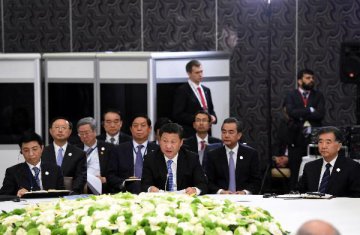China's Ministry of Industry and Information Technology (MIIT) recently unveiled a document to ask cement enterprises in north China to carry out peak-shifting production on a trial basis in winter.
The peak-shifting production in the domestic cement industry will help not only ease the haze, but also enhance climate in the cement market and reduce producers' costs, said industry insiders.
It is reported that due to the fierce market competition, cement enterprises in north China would produce the cement clinkers at full capacity in winter in an effort to seize the market opportunity when the heating supplies end and building operations start.
However, in summer, a season fit for the production, many enterprises are forced to produce at half capacity due to the glut of cement supplies.
As the cement industry is a high energy-consumption industry, the overlap of the cement production and the heating supply in winter will increase coal consumption and lead to haze weather in north China, said analysts.
If the peak-shifting production was carried out in winter for four months, about 4.36 million metric tons (tonnes) of coal consumption and 177.4 billion cubic meters of flue gas emissions would be cut in the whole northern area, which could help improve the local environment.
Meanwhile, the peak-shifting production can also help ease the overcapacity issue in the cement industry.
After the peak-shifting production, cement enterprises in north China and northeast China will suspend production for four to five months in winter and the overcapacity rate in the domestic cement industry will fall to a range between 16 percent and 21 percent from the current 51 percent, which would help enhance the industrial climate, said industry insiders.






















Latest comments